The Pro LE is the top-tier model in GT’s updated Sensor range. Billed as a true do-it-all machine, the Sensor Pro LE is designed to tackle anything you can throw at it, while still merrily munching miles.
The bike features a well-thought-out spec with premium suspension to match its carbon frame. However, GT has fitted more modest wheels and branded finishing kit to keep the price down. The bike gets impressive kit from SRAM for the brakes and gears.
With its new frame, impressive suspension and capable parts, the GT can handle a lot. I had plenty of fun trying to get it out of its depth, which proved to be no easy feat.
If you’re looking for fun and thrills on the trails, rather than all-out undulating-terrain speed, the Sensor Pro LE will make a good companion.
GT Sensor Carbon Pro LE frame and suspension
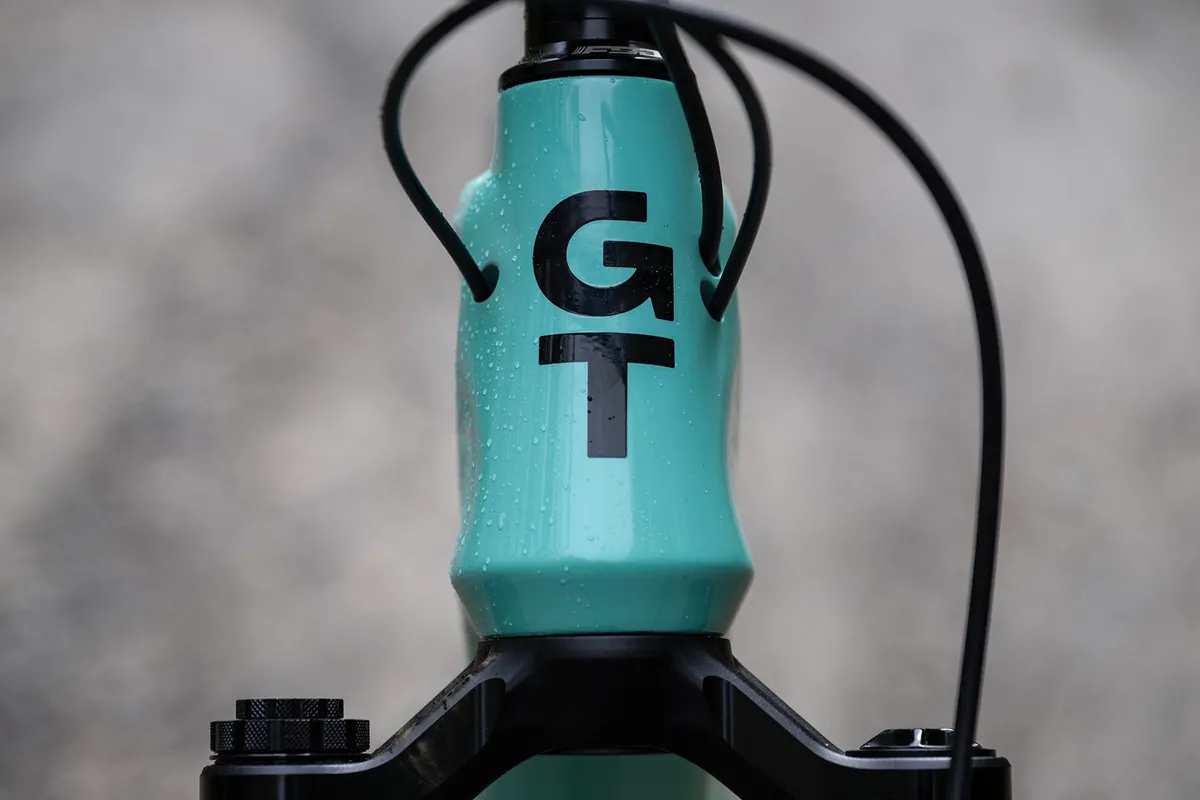
The redesigned frame has a distinctively GT silhouette with its triple-triangle design. The front triangles and seatstays are carbon fibre, although GT uses aluminium for the chainstays on the swingarm for added durability.
With carbon seatstays and a refined linkage, GT has managed to shave off a claimed 600g from a medium frame compared to the previous Sensor. There’s no mention of the claimed frame weight, but we measured a full bike at 14.84kg without pedals in a size medium.
The Sensor Carbon Pro LE dishes out 140mm of rear-wheel travel from a 4-bar Horst-link suspension platform, controlled by a 55mm-stroke Trunnion mount shock. Kinematic details haven’t been provided by GT, however.
As you’d expect for a modern trail bike, it rolls on 29in wheels front and rear for maximum trail efficiency.
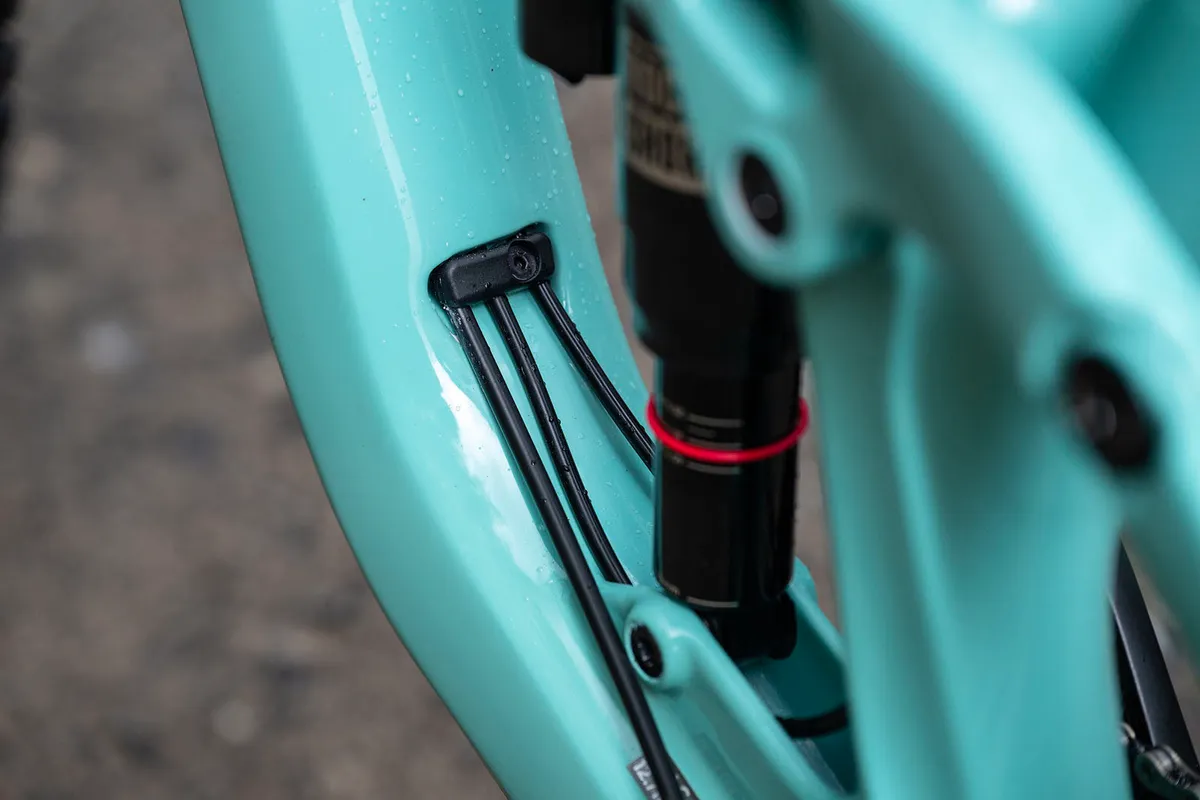
For those who love simplicity, the GT Sensor Pro LE might be your new best friend. It forgoes many of today’s latest trends in frame features, including internal frame storage, geometry-adjust flip chips and headset cable routing.
Some might see this as a con and others a pro, but it helps keep the price competitive for the carbon frame and RockShox suspension specced. However, it’s less customisable than other bikes in its class such as the Specialized Stumpjumper EVO.
There is a bottle cage mount on the down tube, but no additional mounts for tools or spares – you’ll have to strap those on.
The bike features tubed internal cable routing to keep things quiet and quick cable routing, along with chunky chainstay protection and an impact guard under the carbon down tube.
GT Sensor Carbon Pro LE geometry
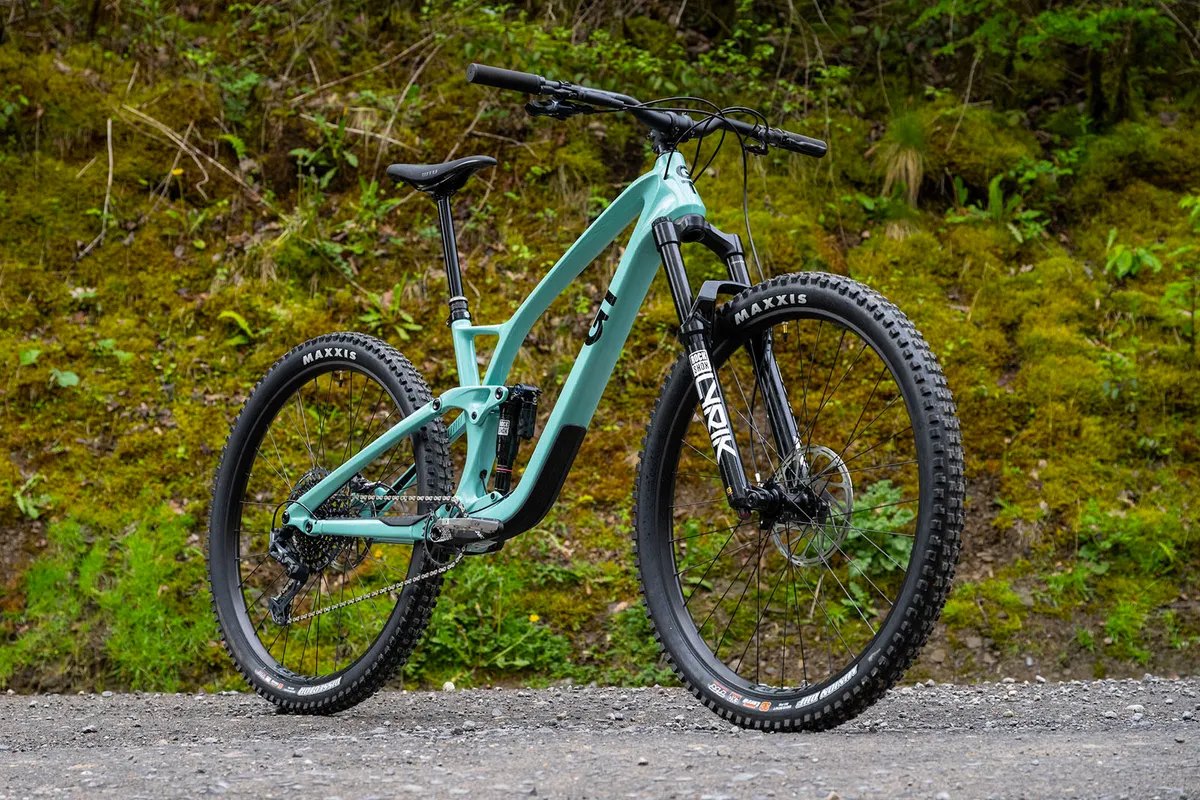
There are four sizes available, from small to extra-large, with geometry that puts it towards the more aggressive end of the trail bike spectrum.
My medium test bike features a moderate 455mm reach and middling 440mm chainstays, which should give a good front-to-rear balance on the trail.
It’s worth noting the chainstay length, head tube angle and effective seat tube angle remain the same on each of the four sizes.
There’s a short 420mm seat tube, which is mostly straight, meaning there’s plenty of insertion length for long dropper posts.
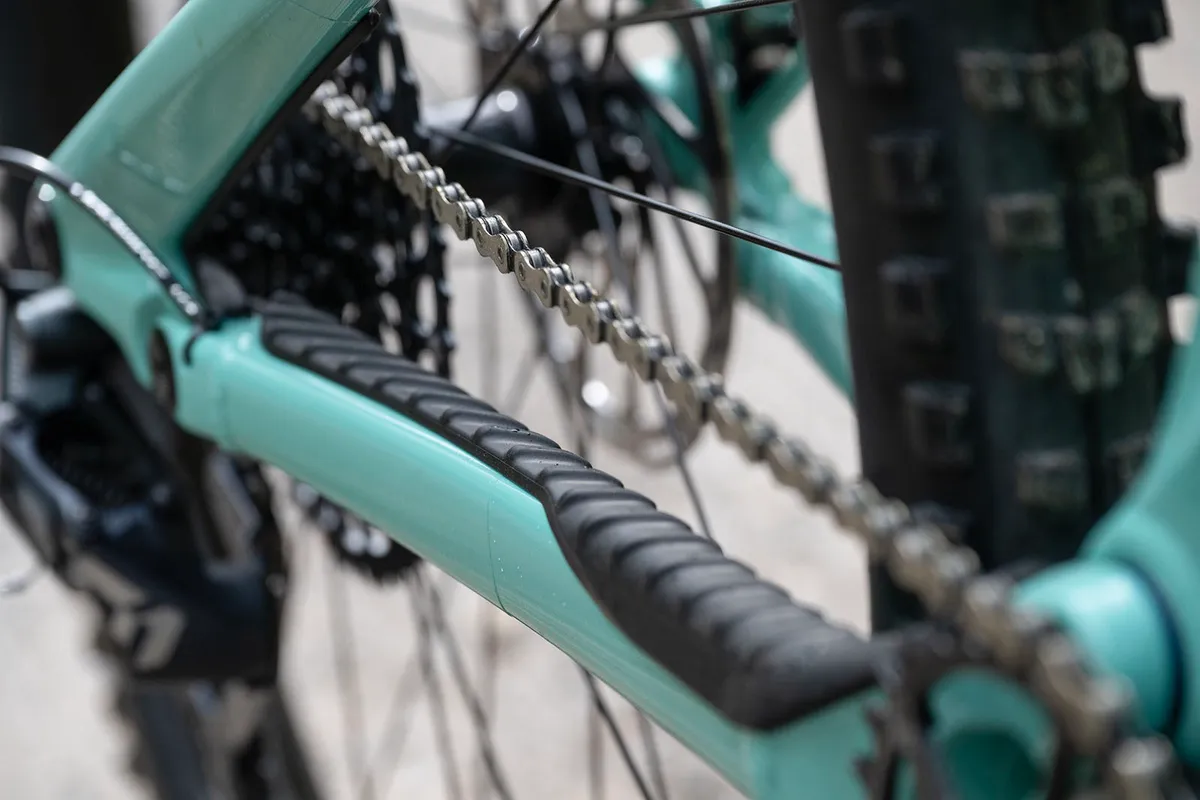
The seat tube has an up-to-date 77-degree effective angle that should position the rider comfortably over the bottom bracket when seated pedalling.
The head tube is trail-focused at 65 degrees and intended to balance downhill stability with trail-focused agility.
The head tube is 120mm long, which gives a 633mm stack height for my size-medium bike. That should lend itself to feeling more confident on the descents than providing an aggressive over-the-front position on climbs.
Overall, the geometry looks well thought out to give the GT a wide range of capabilities across many different trails.
| | S | M | L | XL |
|---|---|---|---|---|
| Seat angle (degrees) | 77 | 77 | 77 | 77 |
| Head angle (degrees) | 65 | 65 | 65 | 65 |
| Chainstay (mm) | 440 | 440 | 440 | 440 |
| Seat tube (mm) | 380 | 400 | 420 | 460 |
| Top tube (mm) | 574 | 601 | 628 | 666 |
| Head tube (mm) | 110 | 120 | 130 | 140 |
| Fork offset (mm) | 44 | 44 | 44 | 44 |
| Trail (mm) | 128 | 128 | 128 | 128 |
| Bottom bracket drop (mm) | 36 | 36 | 36 | 36 |
| Bottom bracket height (mm) | 344 | 344 | 344 | 344 |
| Wheelbase (mm) | 1191 | 1221 | 1250 | 1289 |
| Standover (mm) | 715 | 725 | 735 | 745 |
| Stack (mm) | 624 | 633 | 642 | 651 |
| Reach (mm) | 430 | 455 | 480 | 515 |
GT Sensor Carbon Pro LE specifications
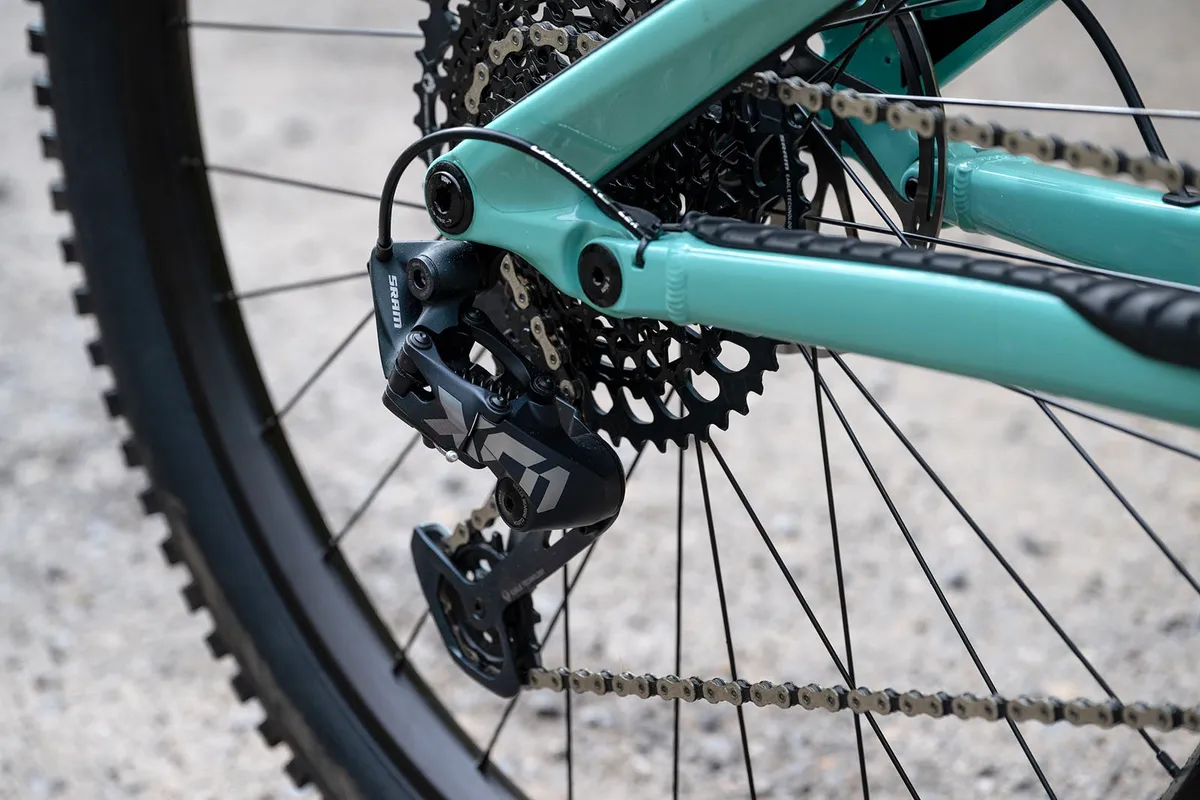
Before I get into the details, it should be noted that GT has changed the spec on the bike for sale compared to the model I’ve tested. There are two changes to this bike, however the price remains the same.
My test bike came fitted with a Maxxis Minion DHF 3C MaxxTerra EXO front and Dissector 3C MaxxTerra EXO+ rear tyre. GT now specs Continental’s front- and rear-specific Kyrptotal Enduro Soft tyres on the bike.
Also, my test bike had SRAM G2 RSC brakes. Online, the bike is specced with more powerful SRAM Code RSC brakes.
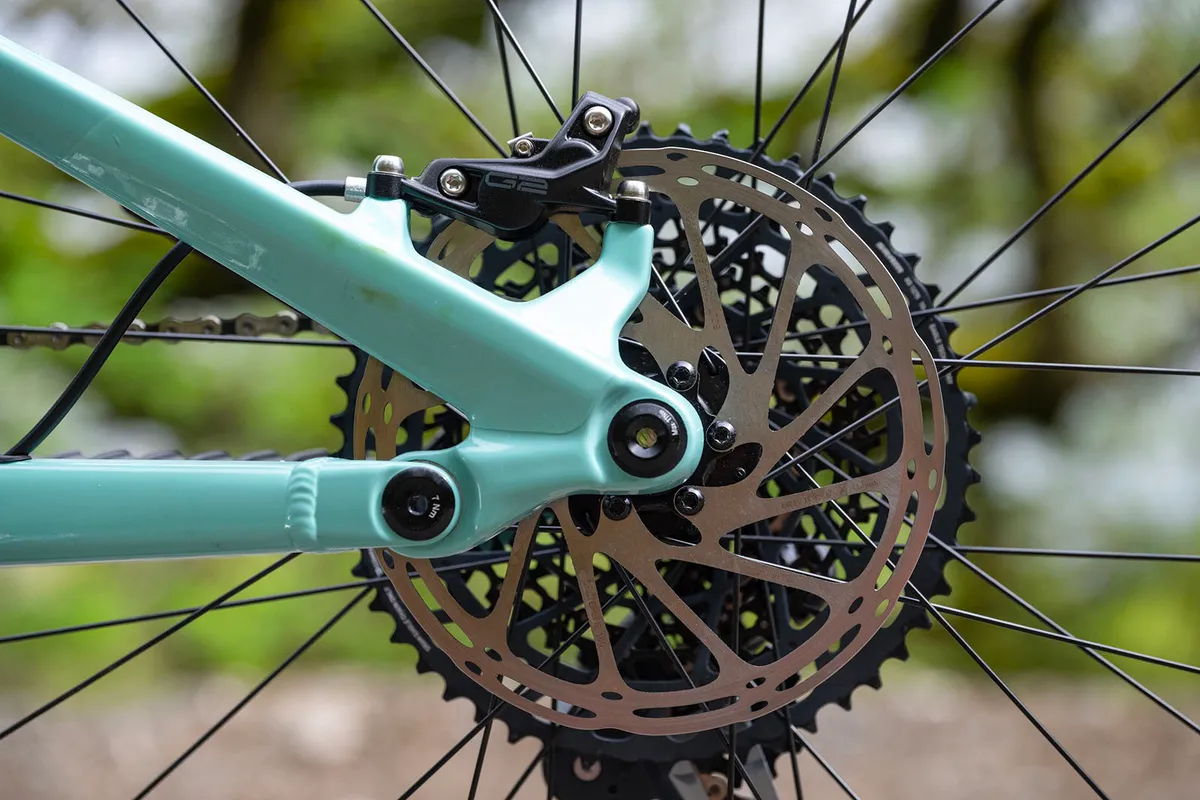
GT has had to make a few spec compromises to keep its high-end Sensor at £5,000. However, the smart carbon fibre frame, and top-tier 150mm-travel RockShox Lyrik Ultimate and RockShox Super Deluxe Ultimate are big selling points.
The drivetrain is SRAM GX Eagle with a SRAM X01 Eagle rear derailleur upgrade. It comes with Truvativ Descendent 6K alloy cranks.
The wheels are the biggest compromise – WTB’s KOM i30 rim with a Formula front hub and SRAM rear.
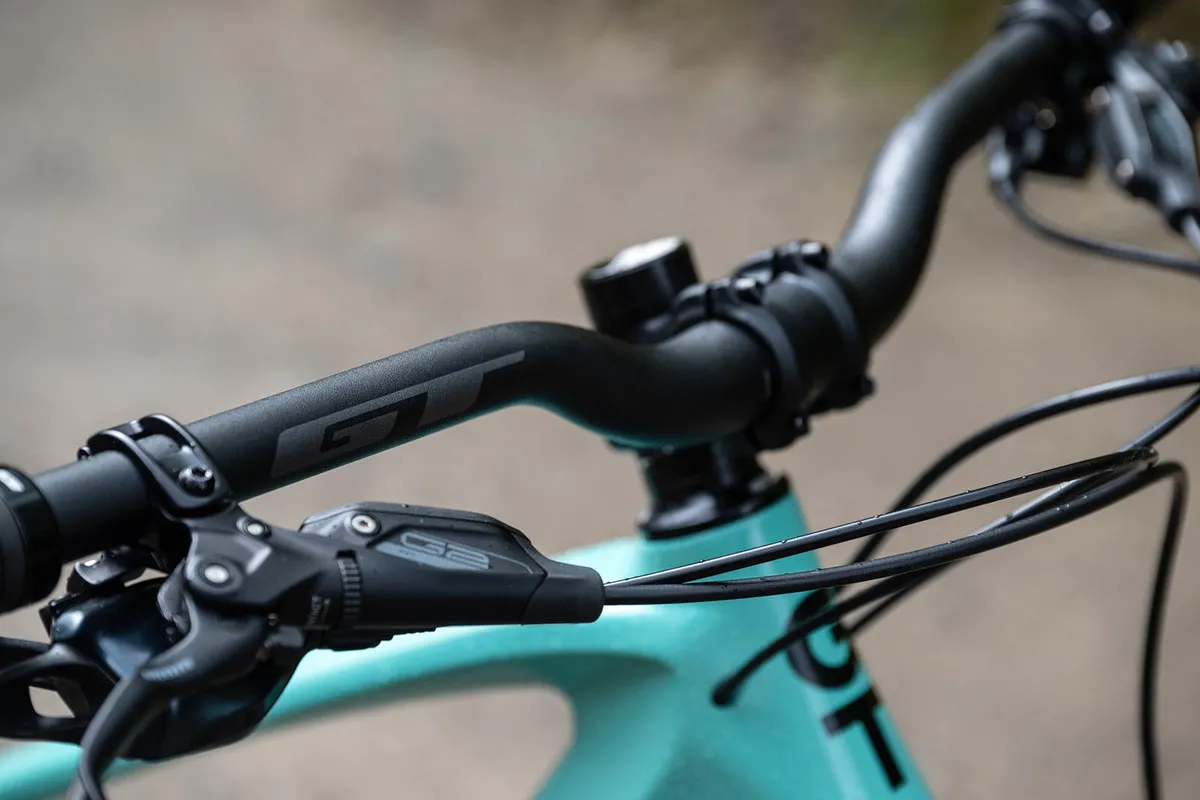
The cockpit uses a GT-branded bar, stem and grips to help keep the price down. There’s a TranzX +Rad dropper post and WTB Silverado saddle to complete the build.
My test bike weighed in at 14.84kg for the size medium without pedals.
GT Sensor Carbon Pro LE ride impressions
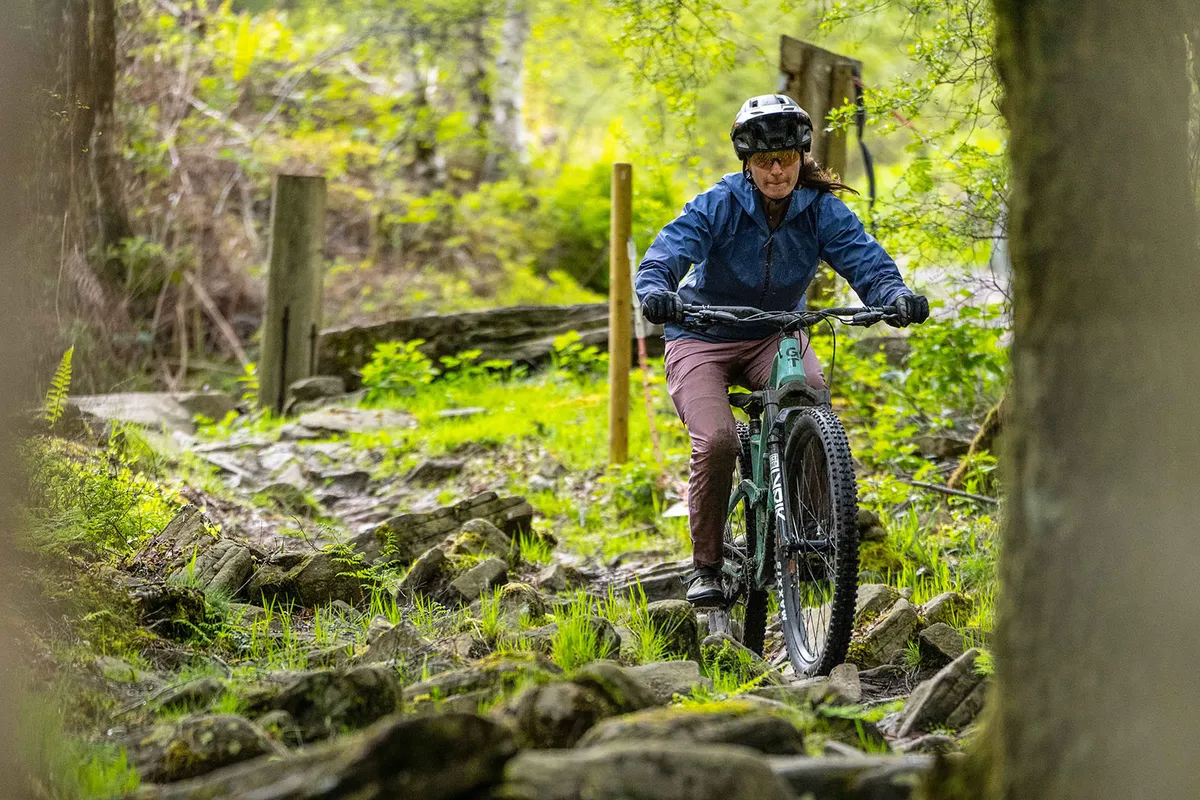
I tested the GT at my favourite test tracks around the Forest of Dean in the south west of England and for some more aggressive riding at BikePark Wales.
Trials ranged from cruisy blue and red trail-centre trails to black bike-park lines and natural tech off-piste tracks.
Trail conditions took in both damp and dry, with a good mix of dirt, hardpack, roots and rocks. I set the rear suspension up to GT’s recommendations, with 25 per cent sag at the shock, which GT claims gives around 30 per cent at the rear axle. For my 75kg kitted weight, I ran 190psi in the shock.
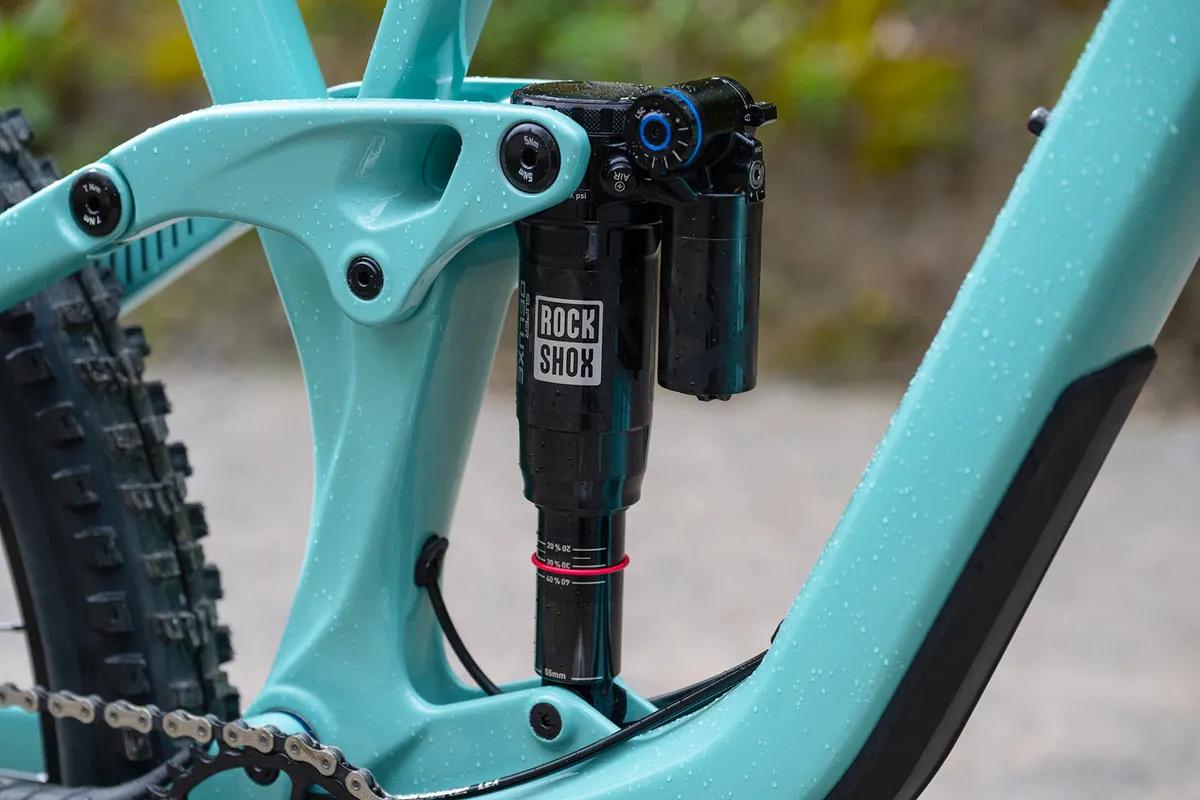
I ran low-speed compression fully open and preferred the hydraulic bottom-out in its middle setting of five positions. Rebound was run at 11 clicks from closed out of 15.
For the fork, I set the pressure according to suggestions from RockShox’s TrailHead app for my weight, with 73psi and 11 out of 18 clicks of rebound damping from closed.
I ran the compression dials fully open. This made the fork feel a little harsh and slow, so I removed the volume spacer, dropped the pressure to 70psi and sped the rebound up until it was fully open. This gave a much better feel on the trail.
GT Sensor Carbon Pro LE climbing performance
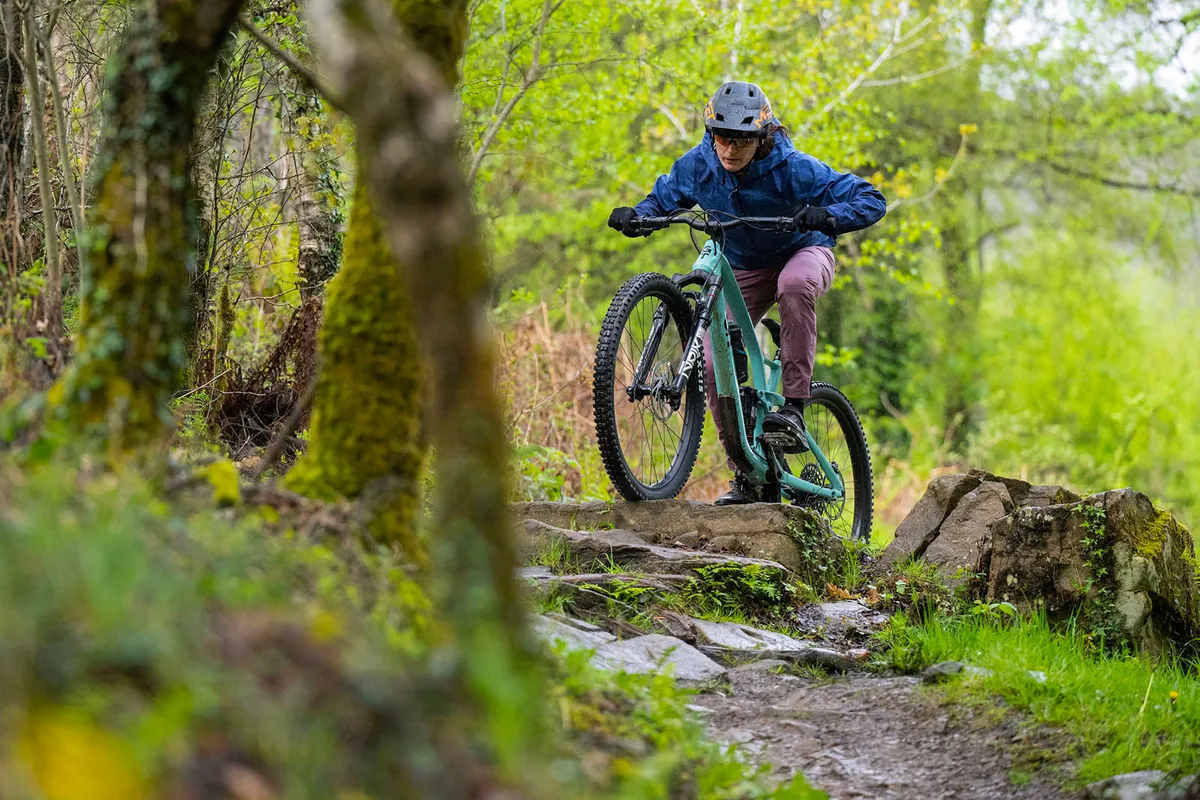
On the climbs, the GT is casual rather than racey. It has a comfortable seated position thanks to the 633mm stack height and moderate 601mm effective top tube.
That produced an upright position that balanced me evenly between the front and rear wheels.
The 77-degree effective seat tube angle perched me above the bottom bracket, where I could pedal with what felt like an efficient stroke. I never felt too far rearwards on steep climbs.
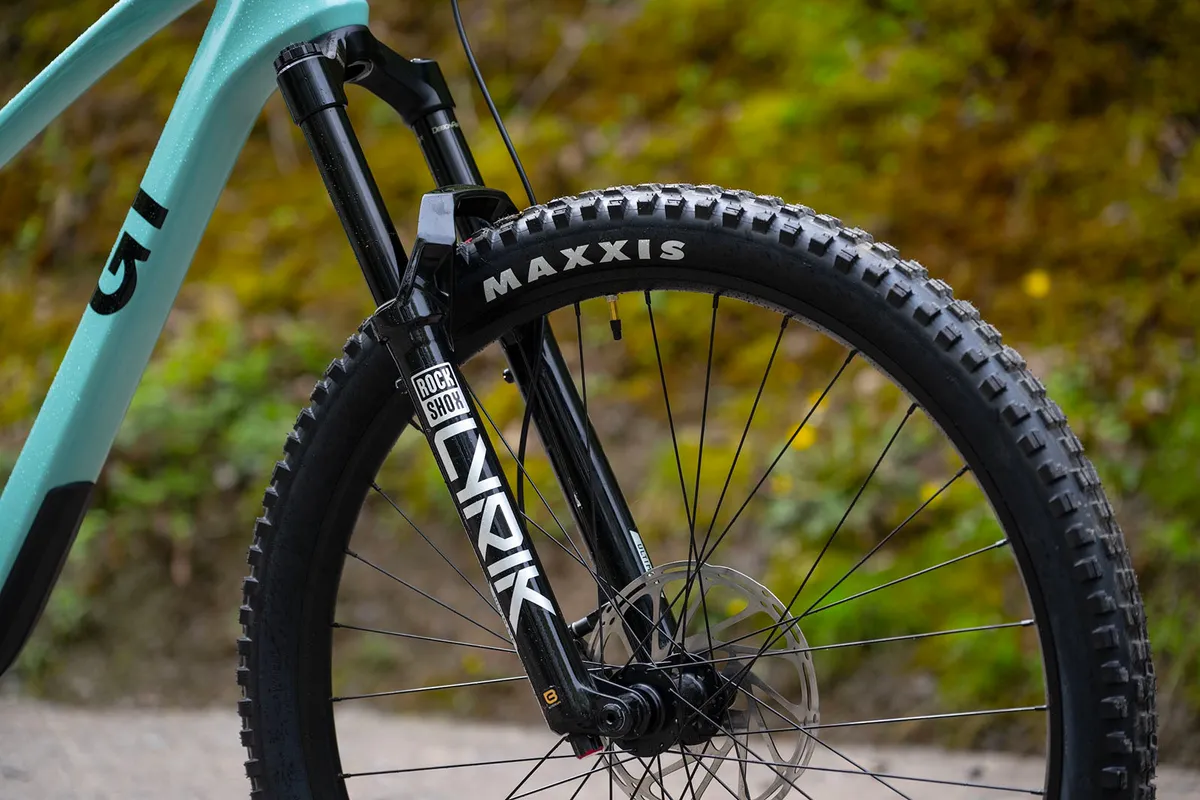
With the GT’s tall front end and relaxed seated pedalling position, I found the bike's front wheel tracking wasn’t the best when the trails became more technical.
On tricky climbing sections, I weighed the bars to help add accuracy and keep the front wheel pointing where I wanted it to.
This wasn’t hard to do, but it's something that helped drive grip on tight hairpins and over tricky, uneven sections of trail.
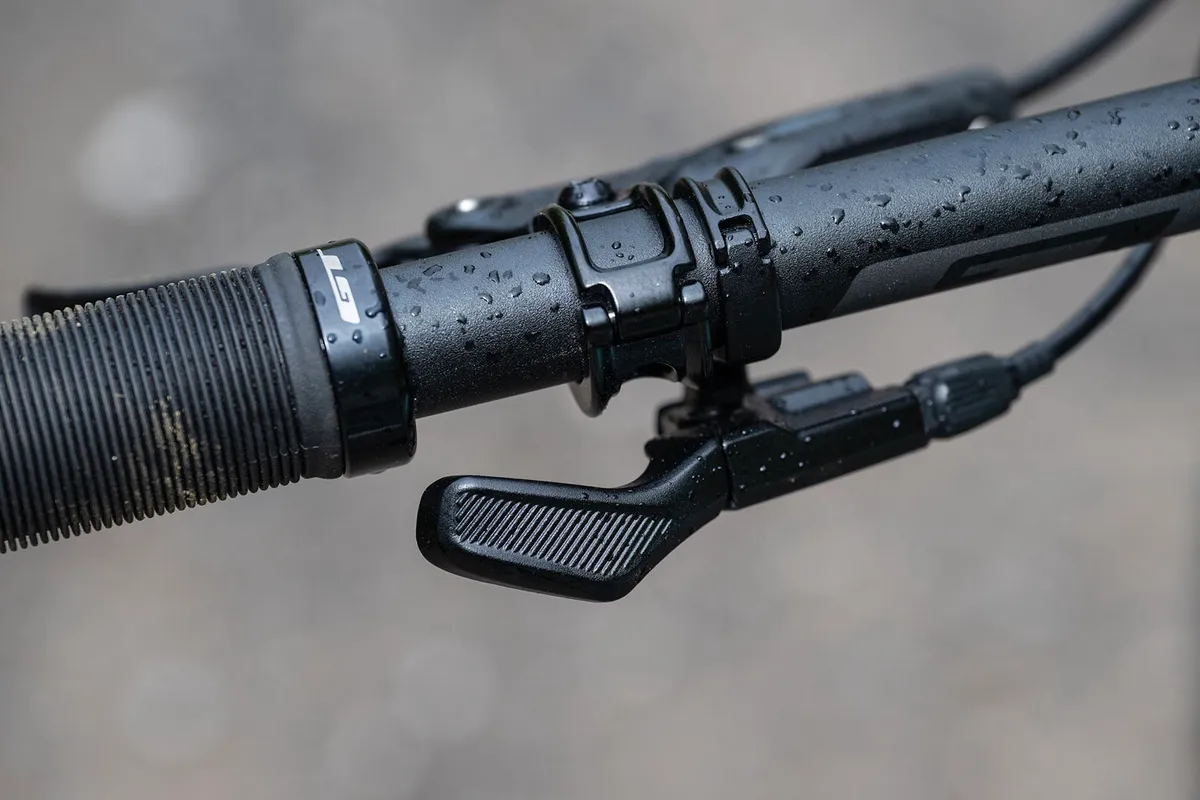
The rear suspension remains stable when seated pedalling, and the travel that is there helps smooth out rough climbs and aids traction.
That said, it’s not the most taut rear suspension system either. It sits in between a YT Jeffsy’s supple rear end and the Specialized Stumpjumper’s firmer setup.
Firming up the rear end made sense to me on longer and smoother, or steeper climbs to help prevent the Sensor sagging into its travel too deeply and helping retain its static geometry.
The GT will clock up miles comfortably, but there are more rapid trail bikes out there that will cover ground faster. That is until you point the Sensor Carbon Pro LE downhill.
GT Sensor Carbon Pro LE descending performance
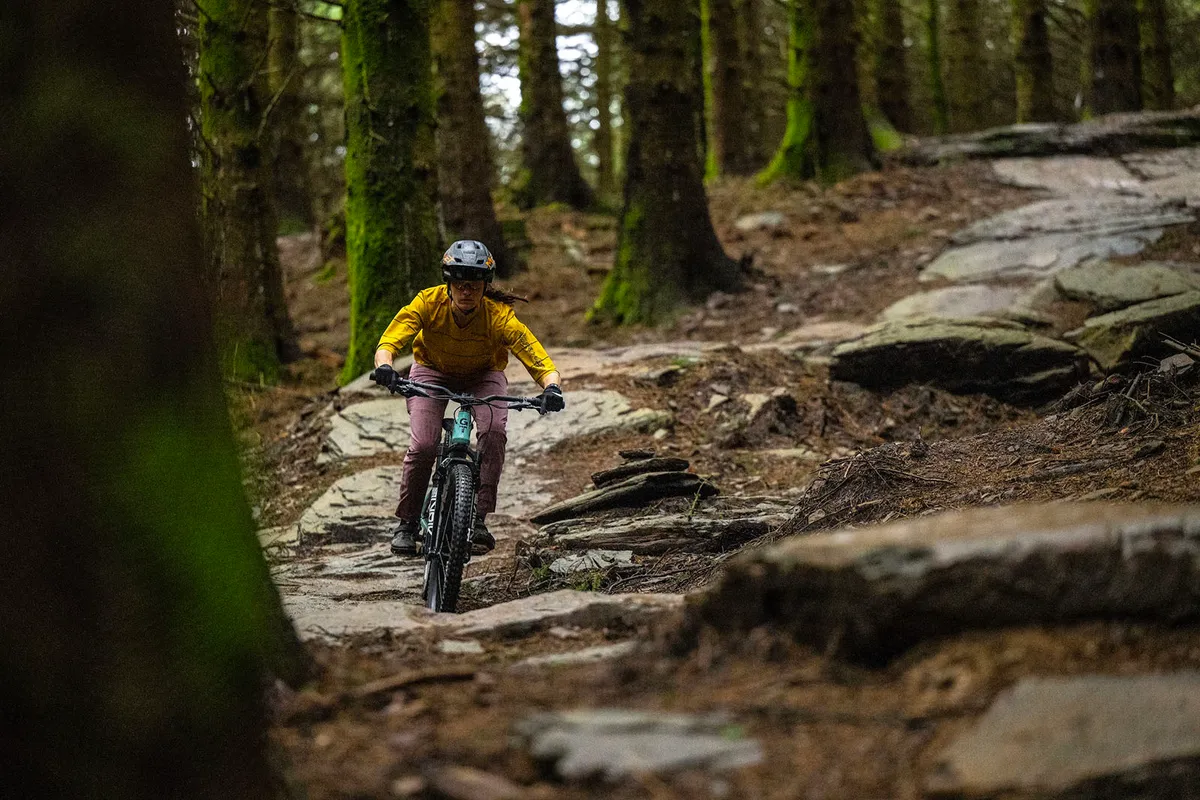
The Sensor Carbon Pro LE with its carbon frame and top-spec RockShox suspension certainly tames trails and offers an impressive ride character that soaks up bumps with composure.
With its tall front end and modern trail geometry, I could charge confidently on the GT when the trails pointed down. This is certainly its preferred mode of travel.
The initial travel of the GT is supple enough to help iron out small trail imperfections to give the bike a smooth ride. However, it doesn’t sink into its sag point and beyond to make the bike feel sluggish or wallow on the trails.
This sensitivity helps find grip through turns, across cambers and over roots and rocks, but there’s also support to help the bike work with the terrain.
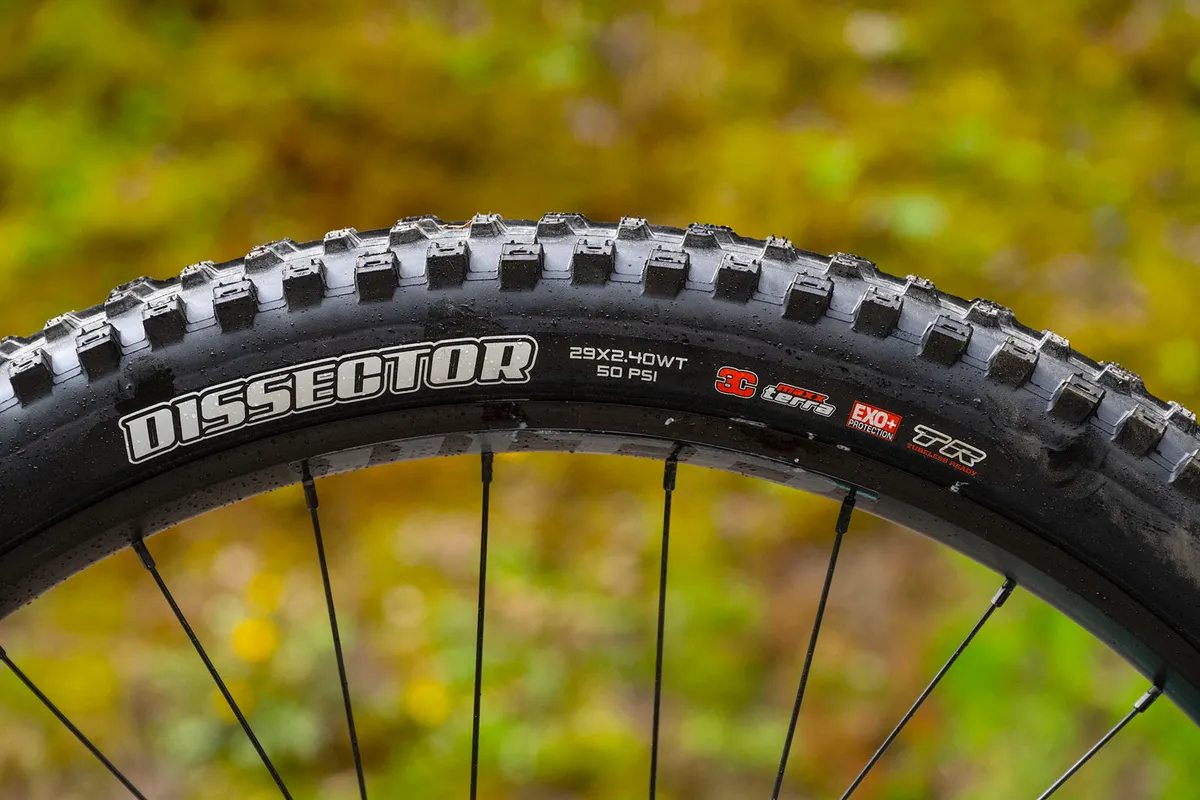
Deeper in the shock’s stroke, the GT doesn’t get out of its depth easily. The RockShox Super Deluxe shock and frame kinematics offer impressive support through its mid-stroke, which helps the bike feel as though there’s more than 140mm of travel.
This support helped the bike maintain momentum when the trails got rowdier and enabled me to push and pump through features to maintain speed.
This is one of the GT's highlights.
GT has managed to extract capable downhill trail-bike performance without the suspension being too soft and planted to the trail. It keeps a lively feel, while soaking up harsher mid-sized square edges with a confidence-inspiring character.
When tackling bigger bumps and hard compressions, the rear end didn't deliver tons of harsh feedback through the pedals, and the GT never felt hard or cumbersome to ride.
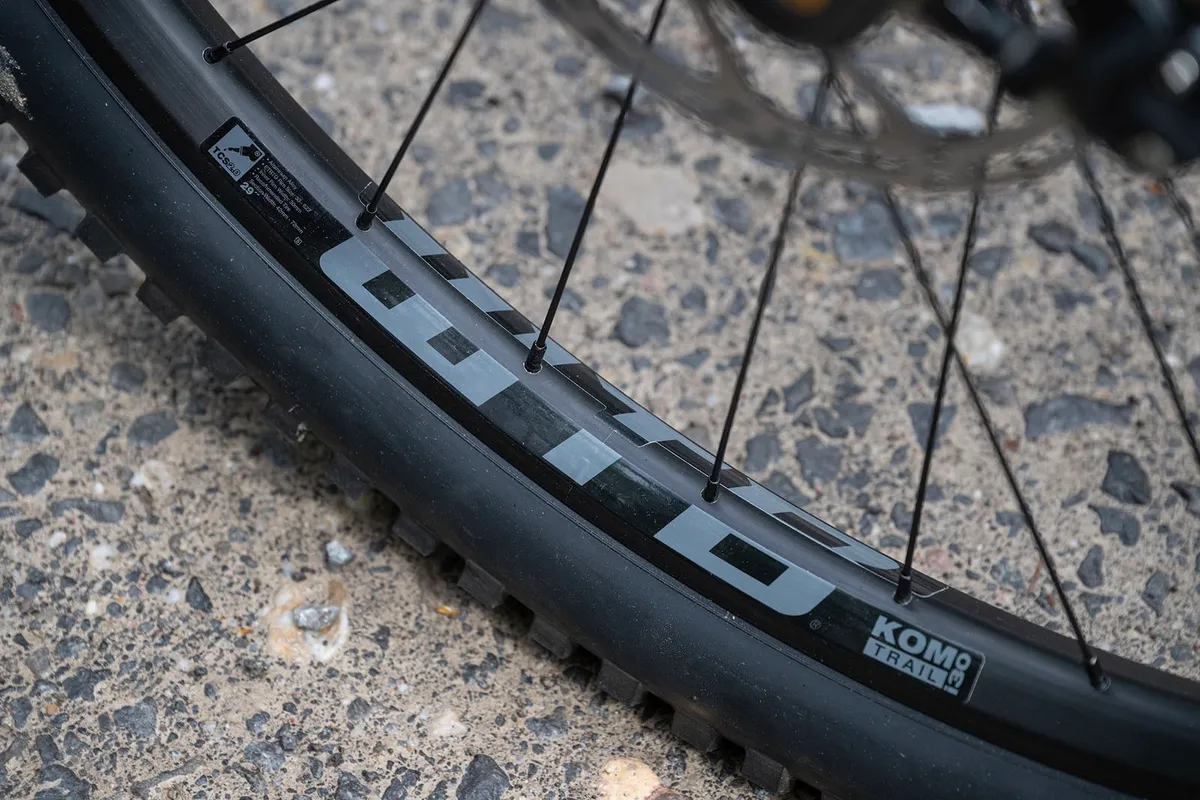
I never found it was too taxing on my arms and legs, and the bike took plenty of sting out of the trails.
With its well-balanced geometry, the GT was easy to manoeuvre around tight turns and remained stable through high-speed berms.
It’s an easy bike to ride and one I feel most people would get on with.
Its geometry sure helps on the steeper trails you might take a trail bike down, but thanks to its sorted suspension, the bike was never dull and delivered an engaging ride on more sedate trails too. GT has an impressive frame and suspension package.
Good spec changes
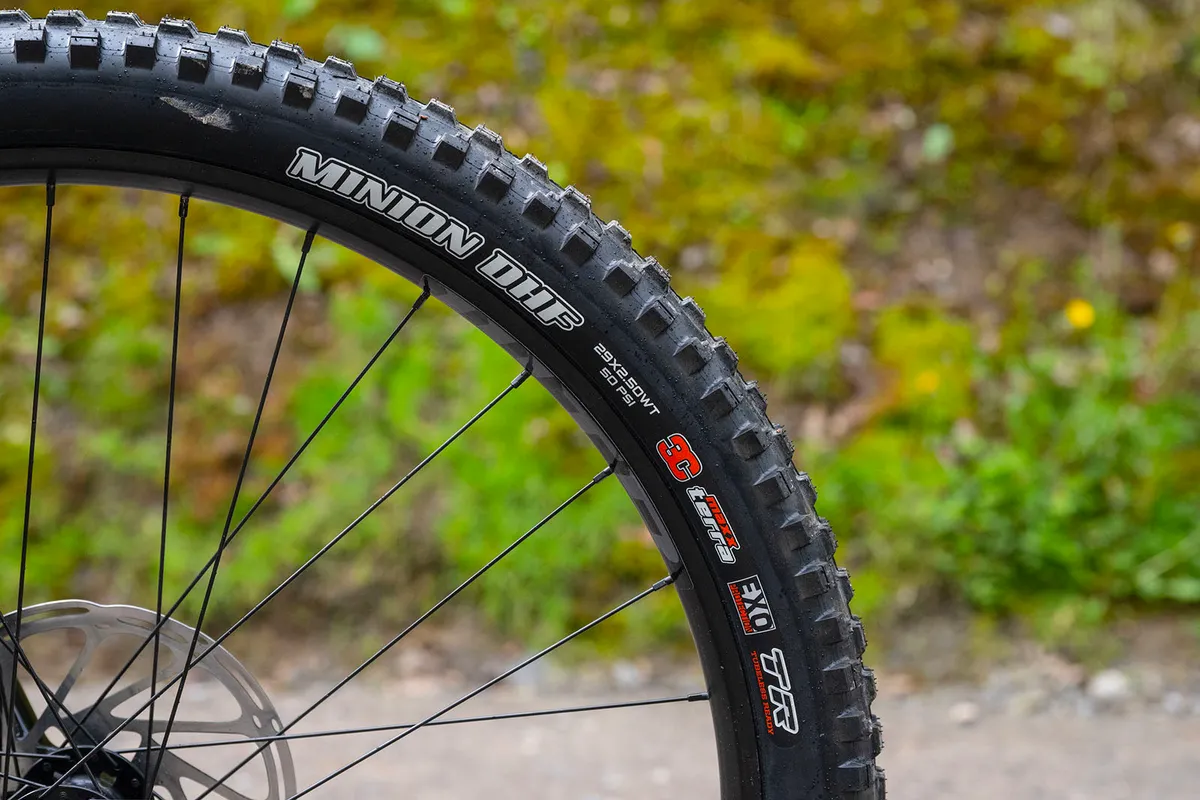
There are a few things that prevent the Sensor Carbon Pro LE scoring higher, but the spec changes GT has made perhaps minimise a couple of these.
The one thing that held my test bike back was the Maxxis Minion DHF EXO-casing front tyre.
The lightweight and low-damped casing helped with rolling speed, but never made the front of the bike feel as confident as it could, often pinging off rocks and roots.
The Continental Kryptotal tyres, fitted to the stock, retail versions of the bike, might remedy this with their tougher casings and tackier compounds.
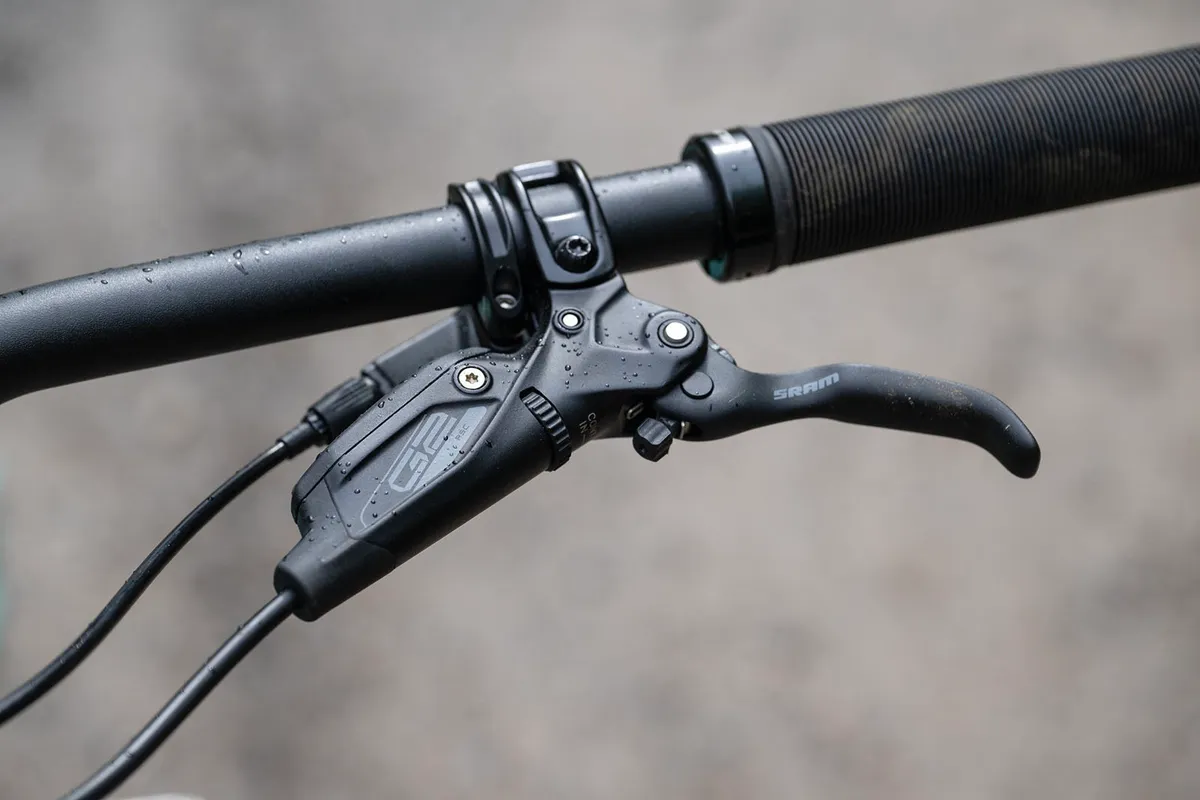
Also, the SRAM G2 RSC brakes were a little lacklustre, especially when the trails got steeper.
This bike can handle some burley terrain, so strong brakes will make a big difference. Hopefully, the SRAM Code RSC brakes now specced help here.
My final gripe is the freehub engagement on the rear hub. The slow engagement made shifting clunky at times, and allowed the cassette to rotate and clank around, making the bike noisier than it could be.
How does the GT Sensor Carbon Pro LE compare to the Merida One-Forty 700?
Can the GT compete with our 2023 Trail Bike of the Year? Both bikes roll on 29in wheels, and have a 65-degree head tube angle, a 150mm-travel fork and around 140mm at the rear (143mm for the Merida).
On the trails though, the Merida, even though it has fractionally more travel, is well supported and more efficient up the climbs. This gives the bike an edge for all-round trail riding.
The Merida is no slouch on the descents, but there is more feedback through the frame and pedals compared to the GT.
The GT is slightly plusher and more composed at the rear. Also, it has a 24mm higher stack than the Merida. This stands you in a more upright position for steep trails, which helps boost confidence.
As an all-rounder, I give the Merida top spot, but the GT is tough to outshine for a trail bike downhill.
GT Sensor Carbon Pro LE bottom line
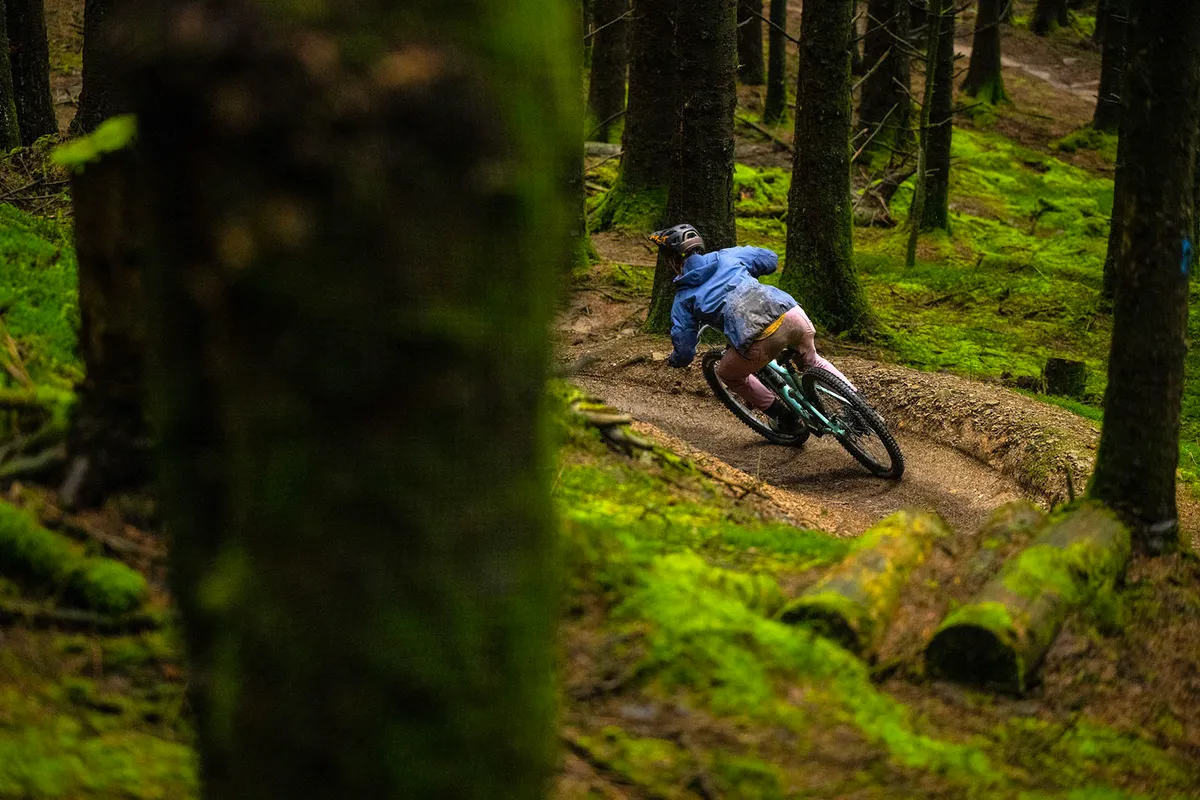
If a trail bike to you means riding the whole mountain, but prioritising fun on downward gradients, the GT Sensor Carbon Pro LE should be worth a look – if it's in your budget.
Its versatile nature will take you everywhere you want to go, but maybe not as fast as other trail bikes. That is, until you point it downhill.
Product
| Brand | Gt |
| Price | £5000.00, $5750.00 |
| Weight | 14.84kg |
Features
| Fork | RockShox Pike Ultimate, 150mm travel |
| Stem | GT Alloy, 45mm |
| Chain | SRAM GX Eagle |
| Frame | Carbon fibre, 140mm travel |
| Tyres | Continental Kryptotal Front Enduro Soft 29x2.4in (f) / Continental Kryptotal Rear Enduro Soft 29x2.4in |
| Brakes | SRAM Code RSC, 200/180mm rotors |
| Cranks | Truvativ Descendant 6K, DUB, 32T |
| Saddle | WTB Silverado |
| Wheels | WTB KOM Trail i30 on Formula (f), SRAM MTH746 (r) hubs |
| Headset | FSA No.42 |
| Shifter | SRAM GX Eagle |
| Cassette | SRAM XG-1275, 10-52t |
| Seatpost | TranzX +Rad |
| Grips/tape | GT Mushroom |
| Handlebar | GT Alloy Riser Bar, 780mm |
| Rear shock | RockShox Super Deluxe Ultimate |
| Bottom bracket | SRAM DUB BSA, 73mm |
| Available sizes | S, M, L, XL |
| Rear derailleur | SRAM X01 Eagle |
